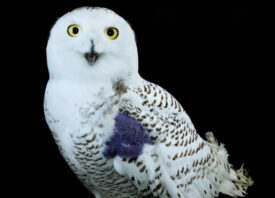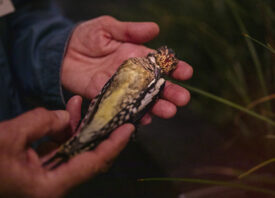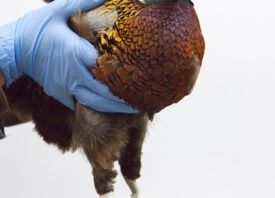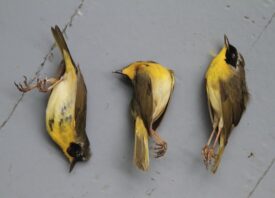Search this site
The Volunteers Who Rescue New York City’s Injured Birds

In New York City, thousands of birds collide with glass towers, fall prey to traffic, or become tangled in string and wire. For most passersby, it’s a sad but forgettable moment. But a small, loosely organized group of volunteers—known as the New York City Bird Alliance Transporters—make it their job to stop, pick up the bird, and carry it to the Wild Bird Fund on the Upper West Side, the city’s only wildlife rehabilitation center.

One of those volunteers, photographer Travis Huggett, has been quietly documenting the people who do this work. The project began a few summers ago, when he discovered the transporters while searching for an activity for his son, who loves birds. “I asked if he’d like to help, and he was immediately into the idea,” he said. They’ve been ferrying birds together ever since.

Pigeons make up the bulk of the rescues, though migration seasons bring rarer species. The injuries are varied: window strikes, poisonings, attacks by cats, or tangled debris wound around a bird’s legs. Most calls come with little notice. “You never know what you’re going to get,” he said. Once, they picked up a vireo that had been hit by a bike. Midway through transferring it from a flimsy bag into a sturdier box, the bird escaped and began circling their car. “It suddenly seemed very healthy and unhappy to be there,” he said. A quick photograph on the dashboard was all he managed before coaxing it into the box.


Unlike the rehabilitators at the Wild Bird Fund, transporters don’t need specialized training. The work is less technical than it is logistical: answering an email, showing up, driving a few miles. Still, it requires a level of attentiveness most New Yorkers don’t give to the animals around them. “It can seem like the city is filled with nothing but pigeons and sparrows,” he said. “But once you start paying attention, you realize there are so many more species than you’d ever expect.”

The photographs started casually—snaps of his son with a box or the birds themselves—but soon became something larger. He now carries a medium-format camera on his transports and has begun making formal portraits of other volunteers. He describes the images as an attempt to give shape to a community that most people don’t know exists. “I was happy with the results right away, so I kept shooting, and I plan to add more portraits this year,” he said.

In his portraits, the volunteers appear calm, resolute, even noble—an intentional contrast to the often frantic circumstances of the rescues. It’s heartening that in a city dominated by glass and steel, a quiet network of people are helping to save bird life.




